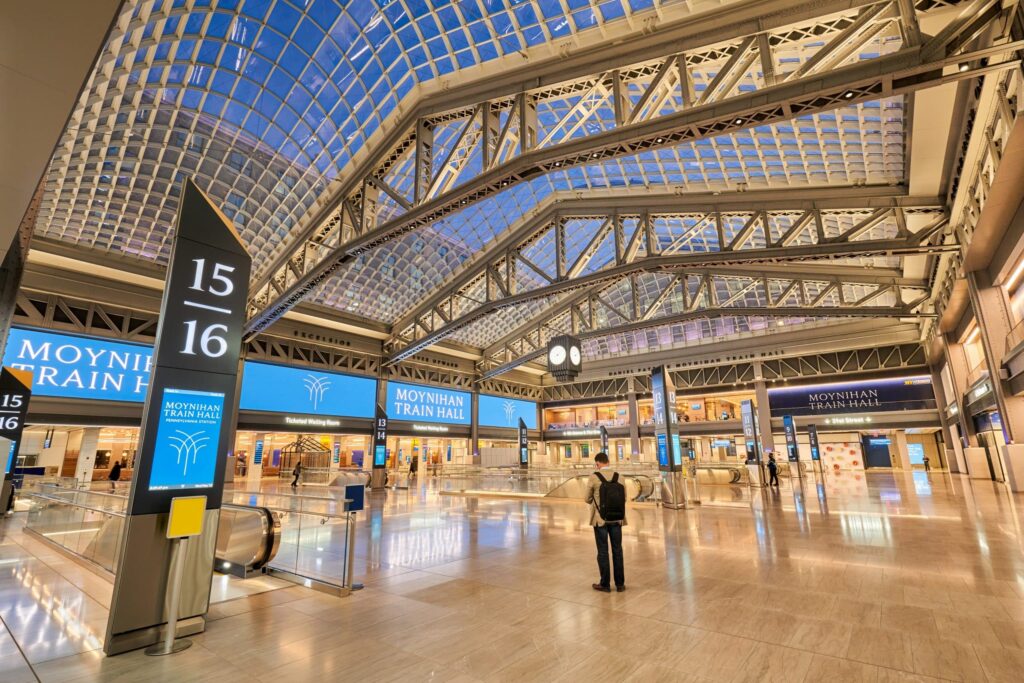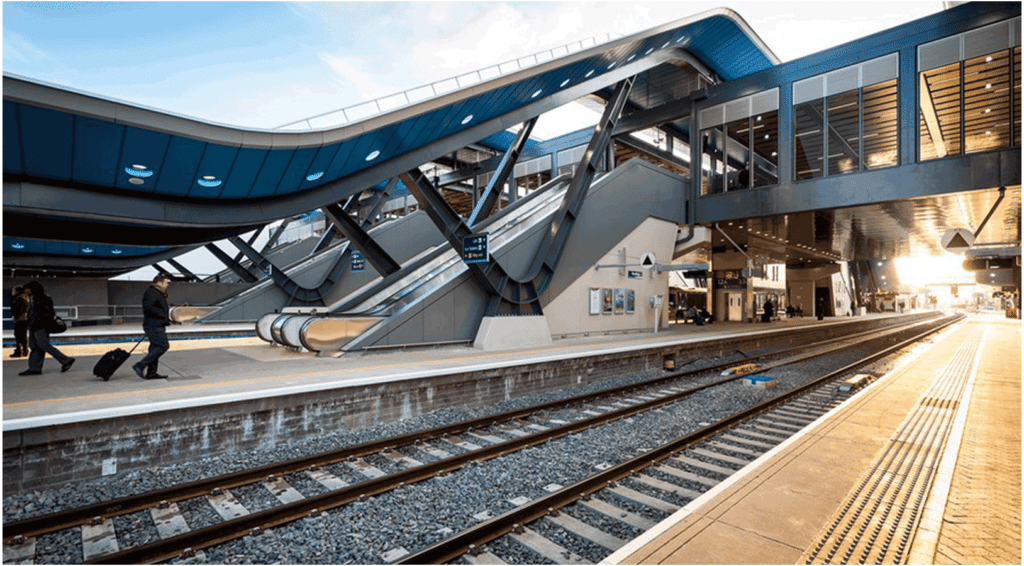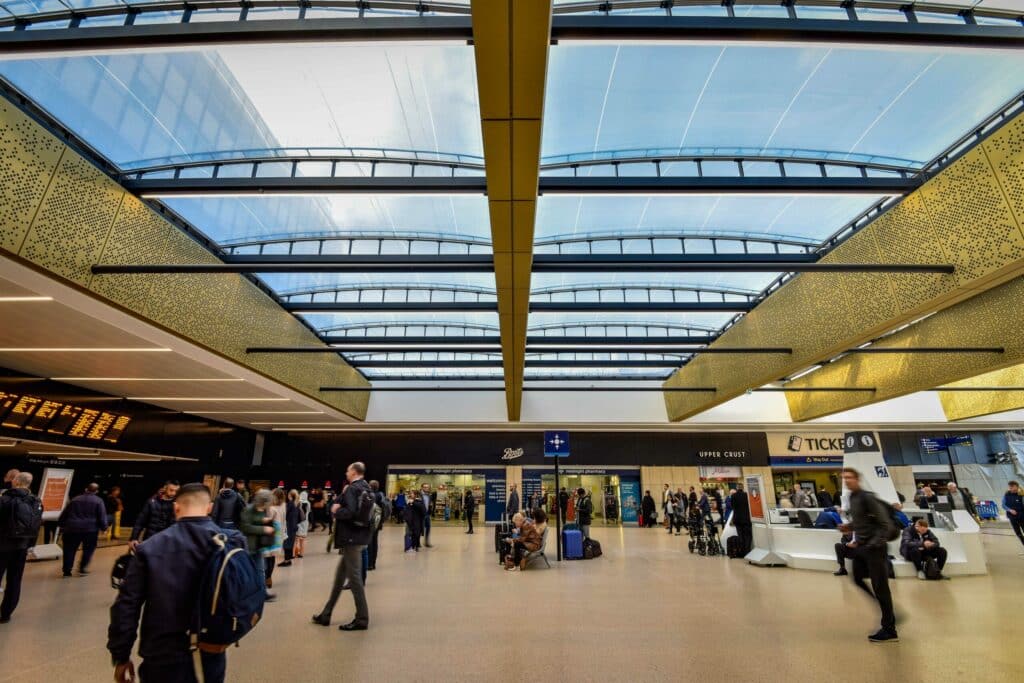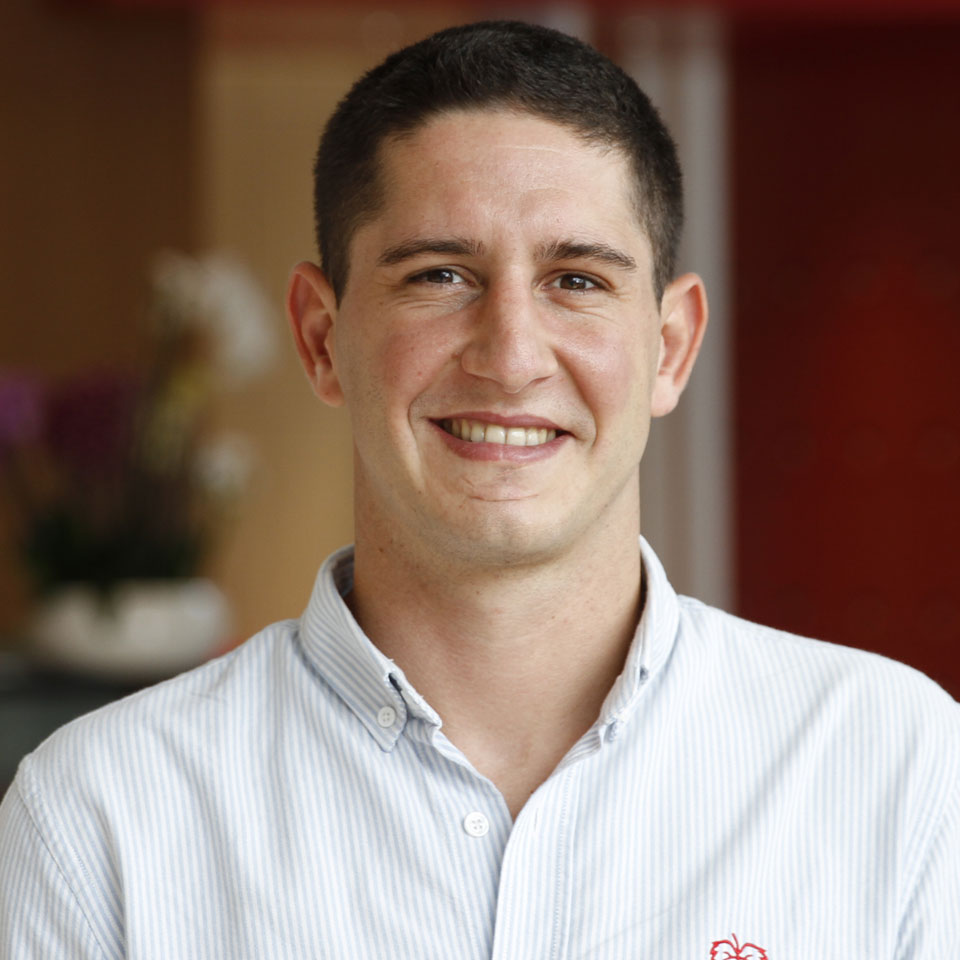Living spaces that are becoming centres of attraction
Stations have become living spaces in their own right, whether they are being created from scratch, extended, renovated or refurbished. We have the expertise to manage not only passenger flows, traffic and passenger information, but also visual identity, lighting and acoustics. We carry out accessibility studies to make it easier for people with reduced mobility to move around stations. Because a station is a living place, it is vital to make it both pleasant and reassuring, to facilitate the passenger experience.
From the station platform to the multi-modal hub, SYSTRA provides all the expertise needed to create stations and interchanges to facilitate travel.

Creation, modernisation: towards optimal stations
We are project managers for some of the biggest stations being built in Europe today: Old Oak Common station on the HS2 network in the United Kingdom, the largest London station built in a century to the north-west of the British capital, which will connect the underground, suburban and high-speed rail networks with a total of 14 platforms, as well as the international stations of Susa in Italy and Saint-Jean-de-Maurienne in France as part of the Euralpin Lyon-Turin project. We are overseeing the construction of these new interconnection hubs, with the aim of maximising the quality of services provided to passengers, while controlling the completion schedule.
Our expertise also extends to modernising existing stations, with major projects to our credit such as the Grande Halle Voyageurs at Bordeaux-Saint-Jean and Valence in France, Moynihan Hall in New York and the regeneration of Tillberga station in Sweden. We are modernising buildings, some of which were built more than a century ago and have become historic monuments, even symbolic of their cities.
We are modernising passenger facilities, such as raising platforms, creating lift access and fixed staircases, and making underground and outdoor areas safe, with particular attention paid to architectural enhancement, while keeping schedules under control to minimise the impact of site operations on passenger and operator operations.
Preparing sustainable stations also means ensuring from the outset that the infrastructure built meets the highest environmental standards. For example, SYSTRA designed the stations for the Route 2020 extension of the Dubai metro, all of which have LEED certification for their excellent sustainability, and our teams in India were involved in the creation of the Nagpur Jhansi Rani Square station, which received the Platinum Award from the Indian Green Building Council.
Multimodality and accessibility: stations for everyone
From new hubs to modernised stations, stations designed by SYSTRA are accessible to all, and particularly to people with reduced mobility (PRM). Our teams have the full range of expertise required to make stations accessible, with numerous projects underway for the New York, Marseille and Chantilly-Gouvieux metro systems. The aim is not only to provide platforms with equipment that complies with PRM accessibility standards, but also to overhaul signage, information systems and appropriate lighting to make these areas welcoming to all.

Multimodality is also key to ensuring the efficiency of new stations: the Philippine authorities have entrusted us with the creation of most of the stations in the new NSCR suburban network, with the aim of turning these stops into areas for concentrating services and redeploying local transport networks.
In France, we are providing Île-de-France Mobilités with our expertise in consultancy, planning and architecture for the development of multimodal hubs in the Paris region, and we have contributed to the studies for the Bry-Villiers-Champigny station, which will connect the Grand Paris Express to the suburban lines of the Transilien network. In Poland, we took part in the creation of the first high-speed multimodal station at Lodz Fabryczna.

From platform to visual identity: towards augmented stations
Whatever the station projects we are involved in, SYSTRA always meets the client’s initial requirements, while providing differentiated services to ensure that the most appropriate solutions are delivered. When budgets are tight or access needs to be improved, our teams can create prefabricated modular platforms, as at Hubbert’s Bridge station in the UK, or install access footbridges, as on the Niort – La Rochelle railway line. We are also experts at creating new platforms in high-traffic stations, such as the Voie L installed without interrupting traffic at Gare de Lyon – Part-Dieu, one of the busiest stations in France.
Did you know?
To enable station platforms to be fitted out in record time and within tight budgets, SYSTRA has devised a modular platform system called SYSTRA Single Bay Modular Platform.
With construction times limited to a few months, even on small sites, this steel solution, which is lighter than concrete, is also less dependent on weather conditions for its creation.
All platform profiles (straight, curved, with PRM access, etc.) are possible. This solution is an asset for operators when redeveloping stations and making them accessible.
 Australia
Australia  Brazil
Brazil  Canada
Canada  China
China  Denmark
Denmark  France
France  India
India  Indonesia
Indonesia  Ireland
Ireland  Italy
Italy  Malaysia
Malaysia  New Zealand
New Zealand  Norway
Norway  Poland
Poland  Saudi Arabia
Saudi Arabia  Singapore
Singapore  South Korea
South Korea  Sweden
Sweden  Taiwan
Taiwan  Thailand
Thailand  United Kingdom
United Kingdom  United States
United States  Vietnam
Vietnam 













